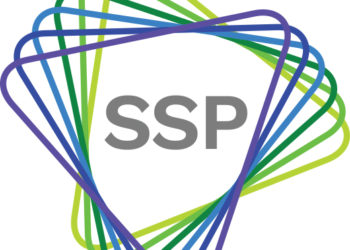In the virtual 15th Conference of the European Association of Science Editors (EASE), a debate was held on the motion: Preprints are going to replace journals. I was asked to oppose the motion and this article is based on my arguments.
Since 2016, the number of preprint servers has rapidly increased and now stands at more than 60. During the COVID-19 pandemic, the importance of preprints, as a vehicle for open science, has widely been discussed, as have the limitations of the academic journals. For three reasons, however, I believe that preprints are not going to replace journals.

First, we have certain expectations from an authentic published research communication. It should be based on research conducted following rigorous standards for research design, should be written in an accepted form, should be validated by peers from the same discipline, should be published formally, and should reach others to read and use for research impacts. Journal articles do meet these expectations.
Preprints also meet most of these, but, before making preprints public, the validation part is totally missing. The meaning of the word ‘published’ has been changing due to digitalization, but, can we really call preprints ‘formally published’? Do they truly cross the line between unpublished and published? I would prefer to call preprints ‘research documents’ or ‘research communication’, but not formal research publications, like academic journal articles.
I very much appreciate the importance of preprints as a ‘social construct’ of a particular discipline — as long as the researchers of a discipline use preprints and collectively appreciate their value in communicating research, preprints will continue having their own niche. But since preprints do not offer the same rigor and standards of journal articles, these two cannot switch places.
Second, given certain limitations of journal publishing, preprints (as research documents) do offer some advantages. Let us talk about four limitations/advantages and how journal publishing has been changing to respond to them. Anyone can read preprints for free, while many journals are behind subscription barriers. Open access (OA) has been changing the journal publishing landscape through different models (e.g., gold, diamond, or hybrid OA journals; transformative agreements between libraries and publishers) and funder policies (e.g., Plan S), and influencing the way we are used to thinking and acting. The Global North-South divide in accessing journals has been a serious concern in recent decades. This gap is being minimized by initiatives, like Research4Life, through which tens of thousands of journals are giving free access to their articles to numerous institutions in 125 low- and middle-income countries (LMICs). Since March 2020, COVID-19 journal articles have been free to all to use. We could learn from this experience and harness similar opportunities for other global crises, like climate change.
While preprint servers charge no fees to post preprints, high Article Processing Charges (APCs) do stop scientists, especially those from the LMICs, from publishing in many journals. But this situation is now changing as many large publishers offer waivers and discounts on APCs to authors from the Global South (although such programs could use further development). Many OA journals, like megajournals, offer competitive APCs. There are also many international, and so-called regional and national journals that publish papers for free or with minimum charges (e.g., society membership fees, review fees). We should debunk the myth of generalizing these journals as being of poor quality.
Authors often criticize the slow pace of journals’ peer review processes and express the agony of repeating the whole process after each rejection. Preprint servers, on the other hand, make a research public within 2 to 5 days upon submission after a quick screening. Many journals are now accepting ‘transferable peer review’, allowing reviewers’ comments from one journal carried forward to another. COVID-19 papers have been published quickly after complete peer-review with publication times reduced by almost 50%. Inter-publisher collaboration has also quickened peer-review of COVID-19 manuscripts by creating a reviewer pool and facilitating rapid review. Faster scholarly publishing is indeed a basic expectation in the post-COVID world.
Many high impact journals are criticized for being overly focused towards novelty and significance of submitted research. Preprints offer more freedom to researchers to share their research. OA megajournals do focus more on the scientific soundness of research, rather than novelty. But, we need to see the world in between these extremes. There are so many good journals all over the world practicing strong quality assurance. These journals should be duly appreciated as a part of creating an equitable scholarly publishing ecosystem.
In my third and final argument, I want to explore three characteristics — distraction, disruption, and destruction — that preprints present.
Despite the high interest in, as well as the rise in preprint submissions during the COVID-19 pandemic, preprints might be a distraction since their apparent strong features suffer from limitations. Preprints, for example, offer the potential for much wider readership and subsequently higher citation, but they suffer from a range of citation-related problems. Open review is often underscored as a strength of preprints, but this expectation does not match with the reality, as preprints only rarely receive reviews and, in many cases, the comments left on preprints fall far short of the journal-led peer-review process. Moreover, a recent study by ASAPbio has identified several technological challenges of preprint review.
Regarding being disruptive, as Rob Johnson and Andrea Chiarelli showed, preprint servers are not threatening journals’ revenue. Although big publishers have been collaborating on (e.g., Springer Nature−Research Square and PLOS−Cold Spring Harbor Laboratory) and acquiring (e.g., Elsevier acquiring SSRN) preprint servers, while learned societies are building preprint communities, the overall investment in preprints still remains limited.
Are preprints destructive to publishers’ business? No way! Preprint servers’ current not-for-profit business model is not sustainable. Although 37 preprint servers were established between 2016 and September 2019, one preprint leader in biological sciences, PeerJ Preprints stopped posting preprints around the time COVID-19 hit the world, after a reality check on the costs required to do so. Since then, OSF Preprints has begun charging for previously free preprint platform services, leading to the shuttering of some preprint servers. Concerns over preprints as a source of misuse and misinterpretation of scientific information were raised before and during the pandemic. Due to significant health risks, manuscripts are being identified as ‘better not disseminated as preprints’. Acceptance of preprints, especially by the academic recruitment and promotion committees, is still far away from invading the space that has long been occupied by journal articles.
The challenges of journal publishing, as shown above, are being overcome with technological and systemic advancements. Despite their limitations, I believe, preprints are here not to replace, but to complement peer-reviewed journals. Preprints will continue helping us to re-think the journal publishing ecosystem, making it more open, diverse, equitable, inclusive, and sustainable.
If we survive to see a world without academic journals, it will not be because preprints won the ‘battle’. It will be because a ‘new generation’ of research communication will meet the demand of the time. But, for now, preprints are not going to replace journals.
Discussion
11 Thoughts on "Preprints Are Not Going to Replace Journals"
I completely agree with these comments and am sorry to have missed the debate. Our current work on the attitudes and practices of early career researchers (www.ciber-research.com/harbingers-2) at least in the UK (we have not finished our analysis yet) bears out his researcher view as representing the new the generation. They would overwhelmingly supported him mainly for the reasons he has put forward. We did ask this question. This did not mean that they were happy with peer review as it is generally practiced but peer review was (crudely expressed) better than nothing
Anthony
Anthony
Thank you Anthony. The study looks quite interesting. I very much look forward to reading the findings once the analysis is done. Early-career researchers, in different parts of the world, do face lots of challenges even in normal times. So, it would be interesting to see what additional challenges they are facing during pandemic or opportunities they are capitalising on (virtual participation of scholarly events, for example).
I recognise many of these points from your debate! It’s probably worth noting that EASE Debates are always framed in quite an extreme and provocative way, to encourage some very dramatic arguments from the spectrum of ideas around the topics – fair to say we definitely got that at the conference!
It was a great session that set up the day very nicely, because even though no one really believes preprints can replace journals as such, there are a lot of very necessary changes that need to happen to research publishing that are embodied by preprints. All the conference themes of sustainability, diversity, progressive development circle back and round the need for journal publishing to change in several ways – which of course it is, and will do…..but is it changing fast enough? another debate entirely, perhaps!
It would have been good to include the counter-arguments in this article too, but maybe that’s for another day.
Also worth noting that the second version of the same debate at the end of the day managed to bring in entirely different perspectives too. A lot of evolutionary ideas spawning from the primordial soup! ;^)
Thank you Duncan, for sharing your reflections on EASE debate this year. The audience did get engaged through chat in both the debates. Although they were predominantly against the motion, I remember some shared very interesting thoughts on (peer)review system, for example, and suggested options to make scholarly communication as a whole better.
Thanks Haseeb, excellent post, sorry to have missed the debate, there are lots of interesting advancements building on preprints too by the way.
Indeed, Adrian. There are so many things happening in the areas of open science/ research/ access/ review driven by technological advancements/ digitalisation. Preprints are indeed getting benefitted from such technological progress. The demand/need for openess in scholarly publishing in all possible forms is also acting as an crucial driver, which cannot be emphasised enough.
Out of curiosity I examined at a random preprint (10.1101/794263) and the downstream published version (10.1093/molbev/msaa145). Of the three authors, two were identified by their ORCID ID in the preprint version but only one in the published manuscript. On this narrow point, the journal reduced the quality rather than improved it. I appreciate that the body of the manuscript represents the main target for journal quality improvement, but it would be interesting to compare a broader range of differences between preprints and published manuscripts.
Interesting observation indeed.
There is a recent research currently available as a preprint on bioRxiv (10.1101/2021.02.20.432090) has compared the tables, figures, abstracts, and conclusions of preprints and of their published versions and drew some interesting conclusions.
Preprints are crucial mostly as a way to accelerate scientific communication but will never be as credible as peer-reviewed publications. However, some valuable manuscripts are rejected because of biased decisions of reviewers or editors, so their preprints may be of vital importance as historical records. Anyway, the quality of preprints can be improved thanks to gradual popularization of EASE Guidelines for Authors and Translators of Scientific Articles (freely available in 30 languages) as well as the EAS Quick-Check Table for Submissions (in 16 languages now), see my slides https://www.slideshare.net/SylwiaU/ease-quick-check-table-and-other-resources-for-journal-authors
Thank you Sylwia, for your comment and sharing those slides.
Yes, peer-reviewed formal publications are generally likely to be more credible than preprint publications. But if he is relying only on “the comments left on preprints,” surely Haseeb does not know that “preprints only rarely receive reviews”? Does he have data on the number of preprint authors who are independently contacted by readers of their preprint? And we can question whether “the validation part is totally missing”? Some readers just need to see the name of a respected author in their field to feel sure that the work attached to that name is valid.



